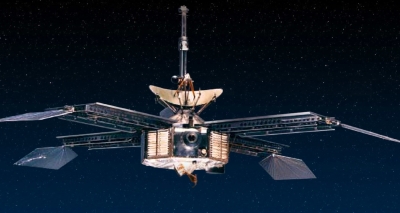
In the period after the two World Wars, rivalry between the world’s two super-powers, the Soviet Union (the U.S.S.R. or the present-day Russia) and the U.S. was at its peak. Space was one of the frontiers both nations wanted to dominate, and thus began the Space Race, the golden age of space technology! The first artificial satellite, the first human to space, and the first mission to the Moon were all sent by the U.S.S.R, while the U.S. was the first to land a human on the Moon, and successfully complete a flyby of Venus. Next up for grabs was Mars!
After six failed missions to Mars (five by the Soviet Union, and one by the U.S.), the U.S. National Aeronautics and Space Administration (NASA) finally scored – its Mariner 4 became the first spacecraft to reach Mars! Launched on 28 November 1964, it travelled 112 million kilometres and completed a flyby of the Red Planet on 15 July 1965. The images it sent back became the first close-ups of the Martian terrain.
The absence of surface water on Mars, its heavily-cratered Moon-like surface, and its lack of a magnetic field came as a shock to many scientists of the day. From the data gathered by the mission, even those who thought Mars might have water or vegetation, had to accept that the planet was dry and barren (signs of water were detected only on later missions)!
Picture Credit : Google




